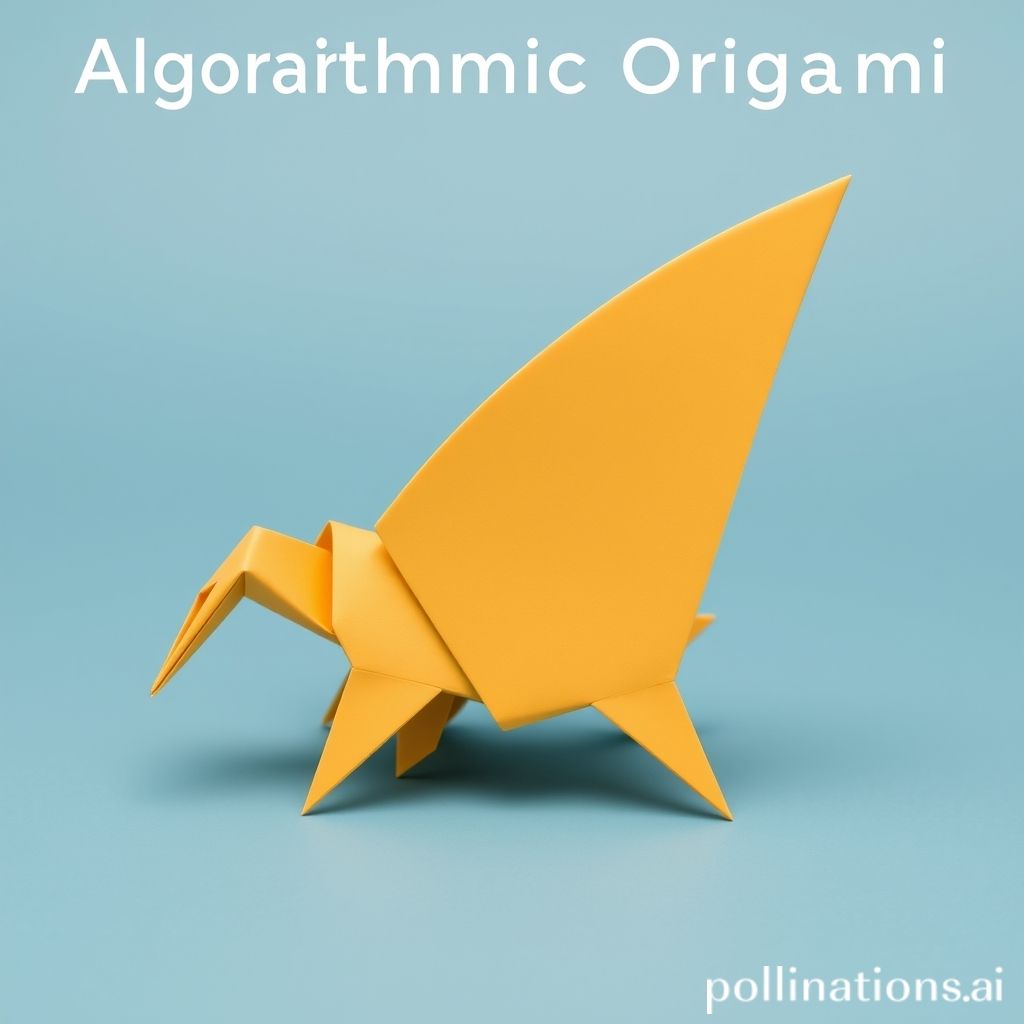 ```html
```html
Algorithmic Origami: Folding Code into Elegant Solutions
Introduction
The art of origami, the Japanese paper folding technique, is often admired for its ability to create complex and beautiful shapes from a single, unfolded sheet. In a similar vein, algorithmic origami represents a powerful approach to software development where intricate problems are tackled by "folding" existing code and concepts into elegant, efficient, and maintainable solutions. It's about leveraging existing building blocks, principles, and design patterns to create something new and powerful.
The Essence of Folding in Code
At its core, algorithmic origami involves several key practices:
- Abstraction: Identifying and isolating the essential aspects of a problem, allowing developers to focus on the core logic without getting bogged down in unnecessary details. This is like simplifying the shape of the paper before starting the fold.
- Decomposition: Breaking down a complex task into smaller, more manageable sub-problems. Each sub-problem can then be solved independently and later combined. This mirrors the individual folds in origami.
- Reusability: Recognizing and utilizing existing code libraries, frameworks, and design patterns to avoid reinventing the wheel. Just as origami relies on established folding techniques, software development benefits from leveraging pre-built components.
- Composition: Combining these individual components in a well-defined and harmonious way to achieve the desired outcome. This is akin to the final assembly of the origami model.
Benefits of the Algorithmic Origami Approach
Adopting an algorithmic origami mindset can yield significant advantages in software development:
- Reduced Complexity: By breaking down problems and reusing existing solutions, code becomes easier to understand, debug, and maintain.
- Increased Efficiency: Leveraging pre-built components and optimized algorithms saves time and resources.
- Improved Code Quality: Following established design patterns and principles leads to more robust and reliable software.
- Enhanced Collaboration: Clear and well-structured code promotes better communication and teamwork among developers.
- Faster Development Cycles: Reusing existing solutions and simplifying complex tasks accelerates the development process.
Examples in Practice
Algorithmic origami principles are evident in various aspects of software development. For example:
- Object-Oriented Programming (OOP): Encapsulation, inheritance, and polymorphism are fundamental OOP concepts that allow developers to "fold" data and behavior into reusable objects.
- Design Patterns: Patterns like the Factory pattern, Observer pattern, and Singleton pattern provide pre-defined solutions to common design problems, effectively "folding" proven approaches into new applications.
- Microservices Architecture: Decomposing a monolithic application into smaller, independent services allows developers to focus on specific functionalities and reuse these services across different applications.
- Functional Programming: Using functions as first-class citizens and composing them to create complex operations is a powerful example of algorithmic origami in action.
Conclusion
Algorithmic origami is more than just a clever analogy; it's a powerful paradigm shift in how we approach software development. By embracing the principles of abstraction, decomposition, reusability, and composition, developers can "fold" code into elegant, efficient, and maintainable solutions, creating software that is both beautiful and functional, much like a meticulously crafted origami creation. Just as the art of origami requires patience, precision, and a deep understanding of the underlying principles, so too does algorithmic origami demand a thoughtful and deliberate approach to software design.
```